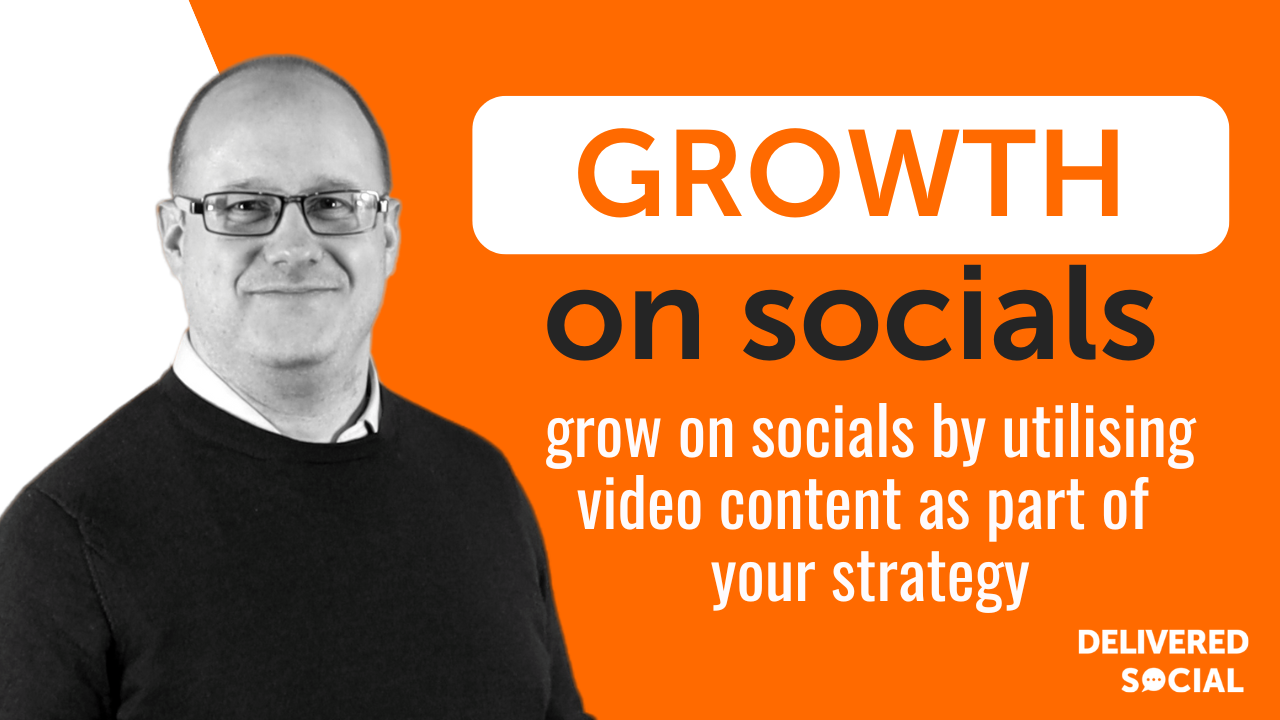
Don’t have time to read but still want to hear all about it? Click play and listen now.
With an attention span of a goldfish — 9 seconds to be precise — target audiences easily miss information on social media. But videos engage both sight and hearing senses so it’s hard to miss information.
Video content is all the rage these days. In fact, 87% marketers swear by it and claim that it increases traffic. 94% of them say that it helped their target audience understand their product better.
Video is one of the best ways to explain complex concepts. Add cool subtitles, engaging music, interesting graphics, a likable speaker, and you can actually make someone sit through a product demo.
Importance of videos in for social media strategies
Videos are an integral part of all social media content strategy. Don’t take our word for it; Instagram itself announced that it’s no more just an image sharing platform.
Instagram’s head Adam Mosseri said, “Right now we’re focused on four key areas: Creators, Video, Shopping and Messaging.”
LinkedIn is next in line to push video content. Hootsuite confirms that LinkedIn videos earn 3 times more engagement. Facebook, being an old platform, already backs up video content.
The point is, videos are very important for any social media strategy. If you’re not already using them, start now. Below is a guide to help you use video content properly for your social media growth.
How to use video content on social media?
Now that you know the importance of video content, you must also understand the right ways to use them. Whether you’re streaming live videos, using augmented reality or creating interactive videos, you need a rock solid strategy in place. Wrong strategies would lead to the wastage of time and money.
Below are the step-by-step strategies on the best ways to grow social media presence by using video content:
1. Try all types of videos

There are all kinds of videos. While creating a video marketing strategy, you must lay out what kinds of videos you will post and when. Below are different kinds of videos that you can try out. Each category supports a unique goal:
- Educational:Educational videos are crucial for explaining any product. They answer burning questions in the audience’s mind, helping them fully understand and benefit from the product.These videos are generally meant to raise awareness and highlight key benefits. Using a polished tone and including an SME (Subject Matter Expert) can enhance credibility and make the content more trustworthy.If you have an audience in different parts of the world, create educational videos in multiple languages or convert text to speech for subtitles so the video reaches more people. An AI voice generator tool can further enhance accessibility by providing natural-sounding voiceovers in various languages and accents, ensuring that your message is clear and engaging across diverse audiences.
- Behind the Scenes: Behind the scenes videos provide a sneak-peak into any business. It’s meant for people who already use the product and it aims to build a stronger relationship. These videos showcase transparency which builds trust in the mind of buyers.
- Testimonial: Every once in a while, you should share testimonial videos. They are a little hard to attain and not everyone shares their experience on camera. Still, try to convince your customers to share video testimonials by offering incentives or discounts. Testimonials aim to use word of mouth to grow trust and sales.
- Interviews: Interviews of people within an organization build connection with any target audience. Bring in guest speakers and influencers from the industry you wish to promote your brand. They make any business more authentic and bring out its humane side.
- Demo Videos: As the name suggests, you share your product demo with demo videos. These videos are generally screen recordings or Loom videos where your team members showcase various features of your product. You can unbox a product, give a product tour or test out a new feature in a demo video.
2. Set SMART goals
Create SMART goals for your content. SMART means Specific, Measurable, Achievable, Relevant and Time-Related. This will help you decided on the best ways to grow social media presence by using video content.
A salesy product video won’t work with someone who’s not aware that your product exists. Set clear goals for what you want to achieve with your video. Is it meant to raise awareness, make a sale or make someone subscribe to your newsletters?
You have to meet your audience where they are. For instance, a video marketing agency may teach its audience to build video marketing strategies and ask them to join their newsletter at the end.
Here, the agency’s goal is conversion. So even if the shares are less, if more people subscribe to the newsletter, the goal is achieved.
3. Pick the right platforms

Every platform supports different kinds of videos so you need to pick the best ways to grow social media presence by using video content. Pick your platforms based on your goals and video producing capacity. For instance, Instagram is very vocal that it would promote reels but you can’t share longer videos on this platform.
Facebook, being an old platform, supports all kinds of video — long or short. On the other hand, TikTok relies on short 60-sec videos. LinkedIn also supports different video formats.
Also, you can pick channels by analyzing your audience. If you’re targeting a younger audience, Tiktok, Snapchat and Instagram would be the right choice. If you’re targeting a B2B audience, try LinkedIn, Facebook or YouTube.
Another way is to track the traffic of your landing pages. See where the visitors are coming from. Then, you can enhance your video marketing efforts on the channel that brings maximum traffic.
4. Plan ahead

Creating videos from scratch is a time-consuming task. Planning your content ahead is necessary when you have to produce content in bulk. It will save you both time and money. Use google sheets or project management tools to create topic lists along with publish dates.
Then, layout the process as below:
- Write the script
- Storyboard
- Cast Features
- Shoot
- Edit
- Approve
Content planning is a recurring process that you have to repeat each month or every 3-months. Remember to check for any festivals, events or special opportunities to use them in your content.
For instance, popular clothing brands like H&M or Zara create content around Christmas in December to attract more customers.
Use Google Trends to identify such trends and keywords associated with it so you can push your video content with SEO.
5. Analyse metrics

The last step is analyzing your metrics to track content’s performance. Track views, watch time, likes, comments and shares. These metrics help you understand how your audience reacts to your content.
Use google sheets to track metrics over time. Metrics tell you exactly which videos did well so you can repeat certain kinds of content and avoid others.
6. Distribute your video

Once you’ve created a great video that gained a lot of traction, it’s time to distribute it. Otherwise, it’ll die under the content pile. Distribute your video across two categories:
- Owned Media: Website, blog, emails, social media channels
- Paid Media: Ads, sponsored content, influencer promotion
Distributing across your existing channels is easier. Share videos on your blogs, link them to YouTube or share to your email lists. There are practically no rules. But you still have to think about what your subscribers like.
Paid media has some rules and restrictions. There’s money involved so you can experiment only till your budget allows. Also, people skip video ads sooner than you’d imagine. Partner with popular influencers as they bring a greater audience to the table. More views means more conversions.
7. Improve SEO
Imagine you spend all the time, strategy and editing to create the most brilliant video, but it never ranks. You can’t rely only on comments and shares to promote your video content.
Just like blogs, you have to use keywords and the right SEO strategies so that Google indexes your videos. You don’t necessarily need to aim for the ‘all’ section on Google. There’s a better chance to rank on the ‘video’ section of Google.
Here are the best ways to use SEO to promote your video content:
- Use it on your website: If you’ve made a product explainer videos or demo, embed them on your website homepage or product pages. You can also include videos under FAQs to specifically target your audience’s issues.
- Be Consistent: Just like blogs, or social media posts, you need to post videos consistently for them to rank higher.
- Use video transcripts: Instagram, TikTok and Facebook turn off the volume at the beginning of the video. At this time, captions work wonders to gather more clicks. You can also insert keywords in your captions so the social media pushes them to your target audience.
Are these the best ways to grow social media presence?
Videos are the best way to connect with your target audience on social media. Follow these tips step-by-step to grow your social media reach. Use Amber Script to create subtitles on your videos so they reach more people.
Read on to learn about how social media affects charities.
[code_snippet id=6]Interested In Working Together?
Introducing Delivered Social. We’re The Most-Rated Digital Agency In Surrey & Hampshire – We’ve Got To Be Doing Something Right.
Delivered Social is a digital marketing agency with one mission—to help businesses grow. We’re famous in Guildford and Portsmouth for our social clinics. We believe in free advice. We build lasting relationships because our team prides itself on being helpful, which our clients appreciate.
If you are looking for a new website or an agency to manage your social media presence, we can help.
If you need something slightly different, here's a super handy list of all our services, or you can always email us.
























